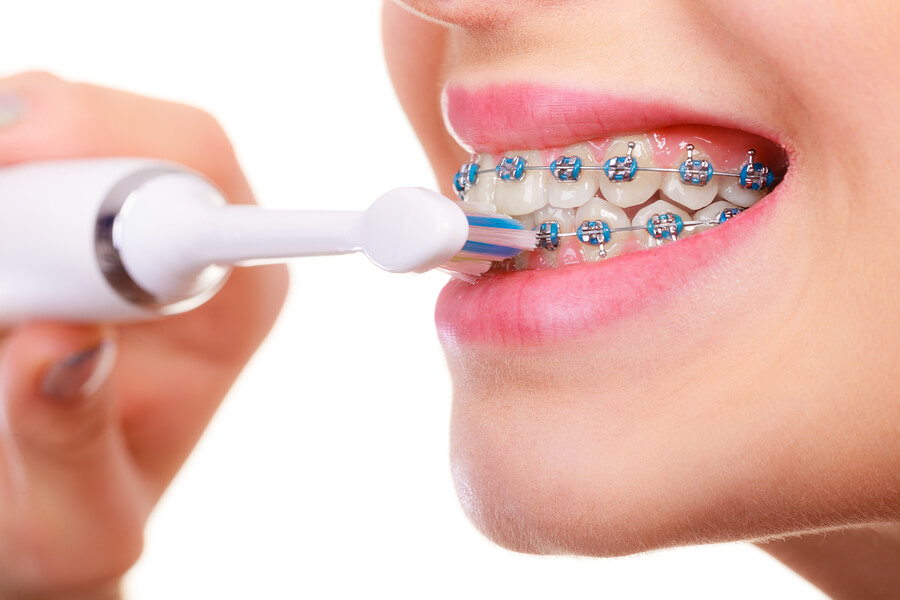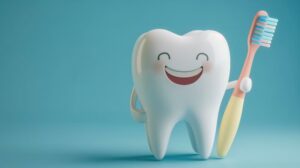Table of Contents
ToggleWhen searching for the best toothbrush for braces, individuals may feel overwhelmed by the options available. It is important to consider the unique needs of braces when selecting a toothbrush.
Key Considerations
When selecting a toothbrush for braces, there are several key factors to consider:
- Bristle Type: Look for a toothbrush with soft or extra-soft bristles to avoid damaging your gums or teeth.
- Head Size: Choose a toothbrush with a small head to easily reach all areas of your mouth, especially around your brackets and wires.
- Electric vs. Manual: Both electric and manual toothbrushes can be effective, but electric toothbrushes may be more beneficial for patients with braces due to their ability to remove plaque and food particles more efficiently.
By taking the time to choose the right toothbrush for braces, individuals can maintain good oral hygiene and keep their smiles healthy throughout their orthodontic treatment.
Whether your braces are metal or a clear plastic, brackets and wires can trap food particles much more easily, increasing your risk of bacteria buildup. The American Academy of Pediatric Dentists (AAPD) reports that about one in five children between six and 11 years old had tooth decay in their permanent teeth as of 2013. This alone highlights that cavities are still a major concern, and wearing braces makes attention to oral care that much more important.
The most common type of braces, metal braces, includes brackets, bonding and archwire. Brackets attach to the tooth with a cohesive bonding material, while an archwire connects these brackets to one another so they can gradually move teeth into a straighter position. Keep in mind, food can get caught between the archwire and individual brackets, so you want to find a toothbrush that will be able to dislodge this debris in-between your braces.
What Toothbrush is Best for Braces?
When considering what kind of toothbrush to use with braces, it is important to take into account the special needs of braces-wearers. Some orthodontic specialists recommend using a soft-bristled brush to prevent damage to the brackets and wires. Electric toothbrushes can also be effective in thoroughly cleaning around the braces. Ultimately, the best toothbrush for braces is one that allows for gentle yet thorough cleaning to maintain good oral hygiene throughout the orthodontic treatment process.
What are the pros and cons of electric vs. manual toothbrushes for braces?
Electric toothbrushes are often praised for their efficiency and ease of use. They provide consistent brushing motions, beneficial for braces, as the oscillating or vibrating heads reach around brackets and wires effectively.
Electric toothbrushes also have built-in timers, ensuring you brush for the recommended two minutes. This thorough cleaning is crucial to avoid plaque buildup with braces.
However, they can be more expensive than manual ones. The initial cost and the need to replace brush heads add up. Additionally, they need charging or battery replacements, which can be inconvenient.
Manual toothbrushes offer better control, allowing you to adjust pressure and angle, useful for navigating around braces. But, this requires good technique for effective cleaning.
One downside is the potential for inconsistent brushing habits. Without a built-in timer, you might not brush for the full two minutes, leading to less effective cleaning, which is crucial for those with braces.
| Type | Pros | Cons |
|---|---|---|
| Electric Toothbrush |
|
|
| Manual Toothbrush |
|
|
Small Brushing Head
The toothbrush itself isn’t going to prevent you from building plaque or eliminating debris, but rather diligent brushing is what’s most important. You want to get a brush that will be able to get into those hard-to-reach spots hidden by braces. The AGD recommends that your toothbrush head should be small for “easy access to all areas of the mouth, teeth and gums.” With this in mind, regular use of your toothbrush can help you better clean the areas of your gum line where bacteria can build up.
The best toothbrushes have certain things in common:
- A brush with a wide handle. The right-sized handle can help you grasp the brush more firmly. If you’re choosing a brush for your child, the AAPD suggests the handle should be somewhat larger to afford them more control over each brushing stroke.
- Soft, nylon bristles. Hard-bristled brushes can wear down enamel and aggravate gums that may already be sore from a recent orthodontics adjustment. Soft-bristled brushes can clean just as effectively without doing this harm.
- Round-ended bristles. The American Dental Hygienists’ Association (ADHA)shows that bristles with a rounded end can better protect oral tissue – which includes all parts of your mouth – from damage.
Which brands are most popular for toothbrushes designed for braces?
When it comes to toothbrushes specifically designed for braces, Oral-B is one of the most popular brands. Known for their advanced technology and ergonomic designs, Oral-B offers electric toothbrushes with specialized brush heads that can effectively clean around brackets and wires. Their oscillating-rotating technology ensures thorough plaque removal, which is crucial for maintaining oral health with braces.
Another leading brand in the market is Philips Sonicare. Their electric toothbrushes use sonic technology to create dynamic fluid action, which helps to clean hard-to-reach areas around braces. Philips Sonicare toothbrushes are often recommended by orthodontists due to their ability to improve gum health and reduce plaque buildup.
GUM, a brand by Sunstar, is also highly regarded for its orthodontic toothbrushes. GUM offers both manual and electric options that feature V-shaped bristles specifically designed to clean around braces. Their products are known for their gentle yet effective cleaning, making them a favorite among individuals with sensitive gums.
Forums
When it comes to finding the best toothbrush for braces, turning to real-world experiences and advice from others can be incredibly helpful. Forum and Reddit threads often provide a wealth of information, featuring personal reviews, tips, and recommendations from individuals who have faced similar challenges. Here are some popular discussion threads that you might find useful:
- Reddit: Best Toothbrush for Braces – A comprehensive thread where users discuss their favorite toothbrushes specifically designed for braces.
- Reddit: Recommendations for Toothbrushes with Braces – In this thread, dental professionals and patients share their top picks and personal experiences.
- ArchWired Forum: Best Braces Toothbrushes – A dedicated forum for orthodontic patients, featuring a detailed discussion on effective toothbrushes for those with braces.
- DentalTown Forum: Recommended Brush for Braces – Dentists and orthodontists weigh in on their preferred toothbrushes for braces in this professional forum.
If you need further assistance on finding the best toothbrush for braces or have questions, the friendly Z- Team staff of Zaytoun Orthodontics will be happy to help!

I’ve been around orthodontics for as long as I can remember with my father opening Zaytoun Orthodontics in 1959. That upbringing of being around my father and watching him change lives through perfecting smiles helped guide me in figuring out what I wanted to do when I grew up, which was to be in the healthcare field. Orthodontics for over 30 years. Joining my father and sister was a thrill for me and something that sets us apart from other orthodontists.





